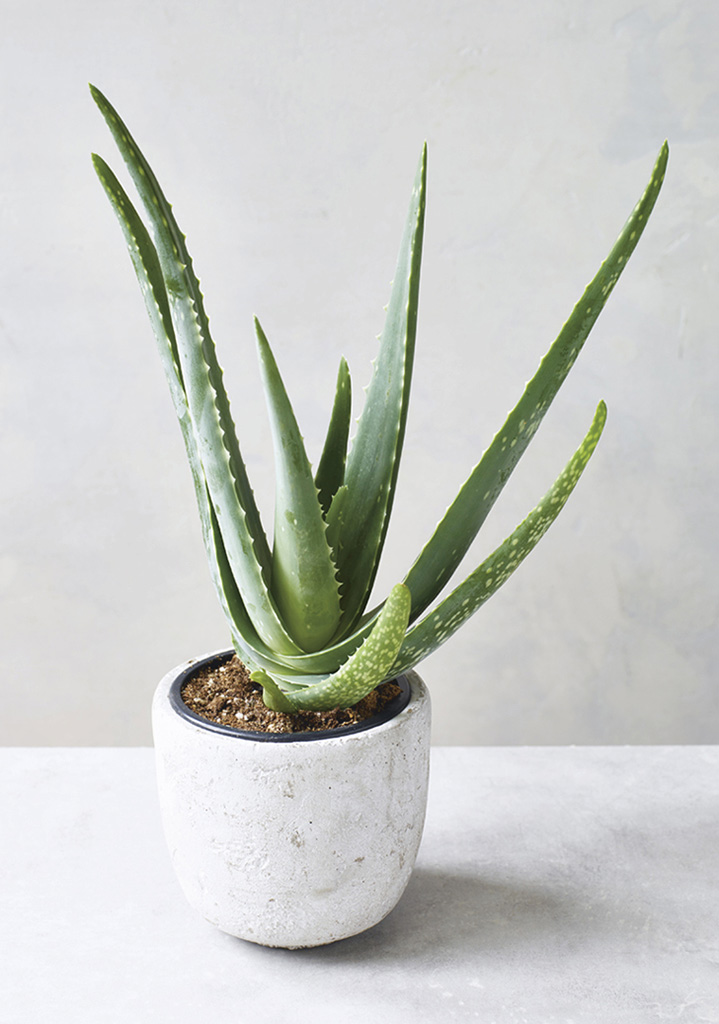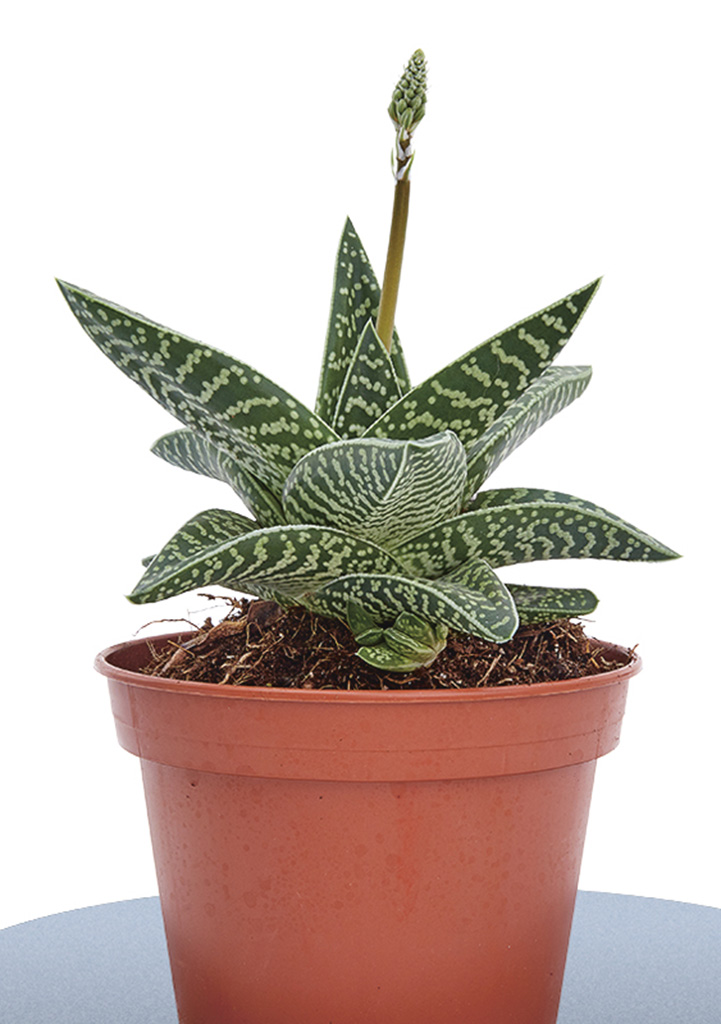ALOE VERA
ALOE VERA
Prized by some for its healing abilities, this succulent is among the most commonly bought houseplants. In the wild, aloe vera can grow up to 3ft 3in (1m) wide; indoors, its size is generally more compact, but its long, fleshy leaves still catch the eye.
HEIGHT 24in (60cm)
SPREAD 24in (60cm)
FLOWERS Spikes of yellow/orange
FOLIAGE Succulent
LIGHT Filtered sun
TEMPERATURE 50–81°F (10–27°C)
CARE Easy
PLACE OF ORIGIN Africa and the Arabian Peninsula
CARE
Like other succulents, aloe must be grown in a well-drained potting mix, such as cactus potting mix, under filtered (rather than direct) sunlight. In the winter, when the days shorten, aloe vera should be moved to a south-facing window. It can be moved deeper into the room in high summer. On warm days, open the windows to give your aloe plenty of fresh air.
These plants grow in arid environments in the wild so you can easily kill them with kindness. From spring to fall, water the potting mix only when it gets dry, and don’t be tempted to mist the plants. In winter, water even less frequently. You’ll know if your plant is happy as it will begin to produce baby offsets that can be simply removed and potted. If you’ve met all of its needs, it may produce tall clusters of orange, tubular flowers in spring, though this is rare in cooler climates.
PROBLEM SOLVING Most problems with aloes are caused by incorrect watering. Too much water and the leaves will rot at the base, too little and you’ll notice brown spots on the foliage. Leaves can suffer from shock and look generally unhealthy if watered with very cold water. Try tepid water instead.

Aloes are often kept in the kitchen so that they’re on-hand for treating burns.
DID YOU KNOW? GEL FROM ALOE VERA LEAVES HAS ANTISEPTIC PROPERTIES AND IS BELIEVED TO HAVE BEEN USED FOR CENTURIES AS A BALM TO TREAT BURNS.
DISPLAY
Succulents require very little water for much of the year and many remain compact in pots, so you can have fun planting them in quirky containers such as large glass jars. Echeveria species have a flat habit, making them a perfect contrast to the swordlike foliage of the aloe.
Houseplants A–Z | ALOE VERA
ALSO TRY
There are more than 500 species in the genus Aloe, some of which are towering giants—A. marlothii can reach a height of 5ft (1.5m). These smaller, fun aloes are worth a try if you find them for sale:
- Partridge breast aloe (Aloe variegata), height 12in (30cm). In summer, this plant’s rosettes of variegated foliage are sometimes offset by salmon-red flowers.
- Spider aloe (Aloe humilis), height 12in (30cm). This dwarf plant has silvery-green foliage covered with toothlike ridges.

Partridge breast aloe is named after the pattern on the bird.
